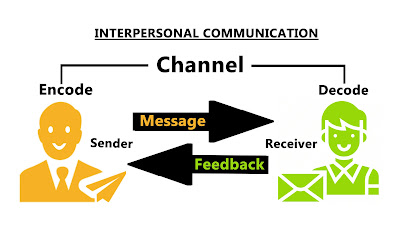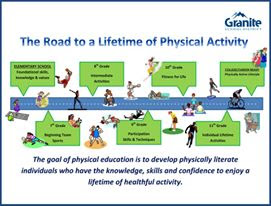Typology Communication
Interpersonal Communication
- Interpersonal communication is the process to express feelings, ideas, thoughts, information, and emotions. It usually takes place in the form of a message. This can be in the form of verbal (words) or non verbal (how anything is said) like it includes Gestures, Eye- contact, Body language communication. Everybody communicate on interpersonal level regularly.
- The 5 characteristics of interpersonal communication
- Interpersonal communication is the complex process through which people express, interpret, and coordinate messages in order to create shared meaning, meet social goals, manage personal identity, and carry out their relationships.
- Interpersonal communication is a process, or a systematic series of actions that leads to an outcome.
- The purposes of interpersonal communication include: share meaning, meet social goals, manage personal, and conduct relationships.
- There are five characteristics of interpersonal communication.
- Interpersonal communication is continuous; when we are in the presence of someone, and we are aware of each other's presence, we constantly consciously or subconsciously send verbal and nonverbal messages.
- Interpersonal communication is transactional; in each interpersonal communication episode, each participant gains something from the episode.
- Interpersonal communication is irreversible; once the exchange takes place, it can never be ignored or taken back.
- Interpersonal communication is situated; it occurs within a specific communication setting that affects how the message are produced, interpreted, and coordinated.
- Interpersonal communication is indexical; how you communicate is an index or measure of the emotional temperature of our relationships at a particular point in time.
- The dark side of interpersonal communication is a metaphor for inappropriate or unethical interaction.
Good examples of interpersonal skills include
- Active listening.
- Team work.
- Responsibility.
- Dependability.
- Leadership.
- Motivation.
- Flexibility.
- Patience.
Intrapersonal Communication
- Intrapersonal communication is a communicator's internal use of language or thought. It can be useful to envision intrapersonal communication occurring in the mind of the individual in a model which contains a sender, receiver, and feedback loop.
- Intrapersonal communication takes place within a single person, often for the purpose or clarifying ideas or analyzing a situation. other times intrapersonal communication is undertaken in order to reflect upon or appreciate something.
- Intrapersonal communication contains three aspects
- Self-concept: determines how a person sees him/ herself ans is oriented toward others. self-concept is also called as self- awareness.
- It involves three factors :
- Beliefs
- values
- Attitudes
- Perception: whereas self-concept focuses internally, perception looks outward. perception of the outside world also rooted in beliefs, values and attitudes. it is so closely intertwined with self-concept that creating a harmonious understanding of both oneself and one's word.
- Expectations: expectations are future oriented messages dealing with long-term roles, sometimes called life scripts. These sometimes are projections of learned relationships within the family or society.
- Intrapersonal communication involve different levels of communication activity
- Internal discourse: internal discourse involves thinking, concentration and analysis. Also it includes daydreaming and nocturnal dreaming in this category.
- Solo vocal communication: it includes speaking aloud to oneself.
- A person may use self-talk to calm himself down in stressful situation.
- A shy person may remind to smile himself in a social event.
Group Communication
- Group communication is a mode of communication in an organization between employers and employees in team / groups.
- Group communication is an extension of interpersonal communication where more than two individuals are involved in exchange of idea, skills and interests. A group is a number of people with a common goal who interact with one another to accomplish their goals, recognize one another's existence and see themselves as part of the group. Groups provide an opportunity for people to come together to discuss and exchange views of common interest. For instance, casually formed groups with friends over a drink, coffee break, games, dances or religious gatherings
Good example of group communication is
- Group communication is about families, friendship circle, work teams, committees and sports teams. Individuals belong to many types of groups. The quality of peoples lives depends in important ways on the groups in which they belong.
Mass Communication
- The imparting or exchanging of information on a large scale to a wide range of people.
- Mass communication is a medium of dispersing information to a large number of people. The term is not limited to only journalism but spreads its branches to various other media fields including news gathering and reporting, film direction and production.
Good examples of mass communication are
- Common communication channels like
- Print media: magazines, newspapers, flyers, newsletters, scholarly journals and other materials that are physically printed on paper.
- Broadcast media: covers a wide range of different communication methods that include television, radio, podcasts, blogs, advertising, websites, online streaming and digital journalism.
- Social media: applications include Facebook, YouTube, Twitter, Digg, Blogs and other sites that have content based on user participation and user- generated content.
- Mobile media: provide ability to communicate with one another ans access media while on the go. It includes smart phones, PDAs, and other handheld portable devices.
- Commercial advertising, public relations, journalism and political campaigning.






Excellent work.
ReplyDelete